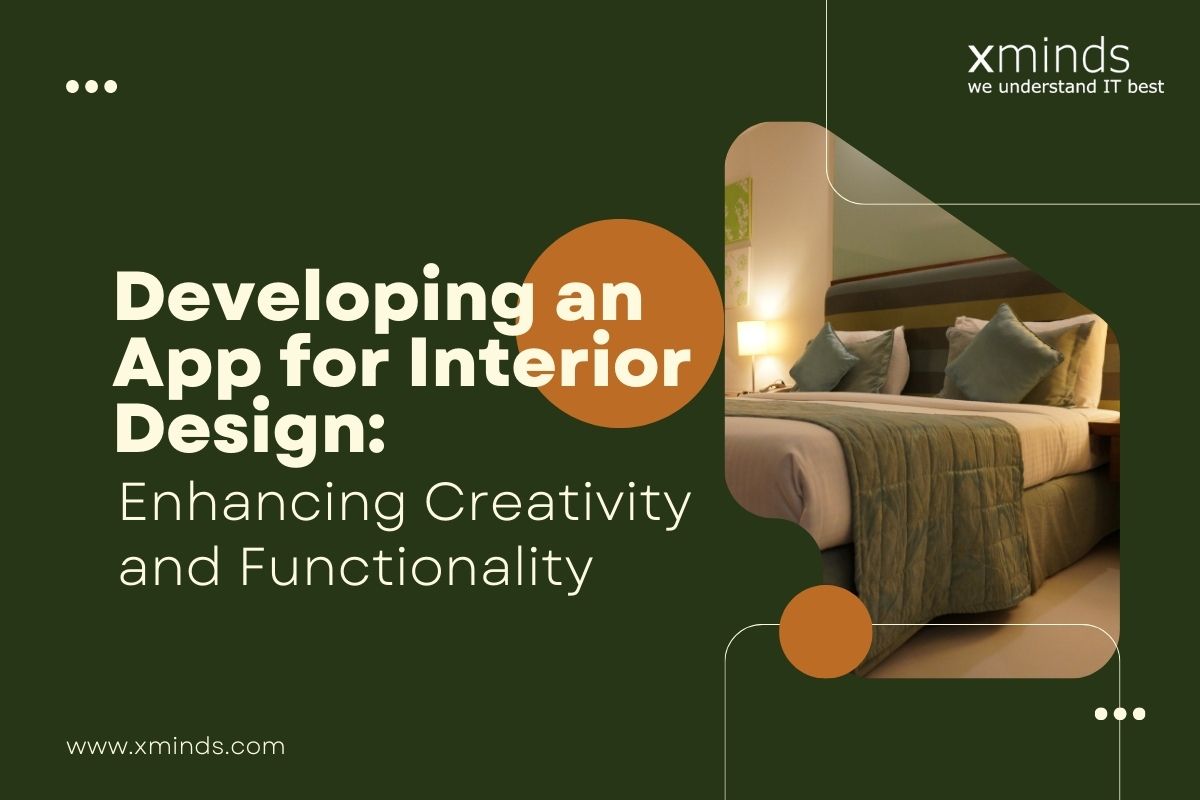Developing an Interior Design App: Enhancing Creativity and Functionality

Introduction
Over recent years, interior design has transcended traditional boundaries, embracing the digital landscape to revolutionize the way we envision and create living spaces. The rise of technology has given birth to a new era of interior design, where creativity and functionality converge seamlessly through innovative apps. This article delves into the realm of developing an app for interior design, exploring its evolution, key features, user benefits, and the trends shaping the industry.
The Evolution of Interior Design
Over the years, interior design has evolved from being an exclusive service for the affluent to a more inclusive and accessible art form. With the advent of the digital age, interior designers and enthusiasts have embraced technology to streamline the design process. This evolution has paved the way for the development of interior design apps, which combine aesthetics, functionality, and user-friendly interfaces.
Digital Transformation in Interior Design
The digital transformation of interior design has brought about a paradigm shift in how designs are conceptualized, visualized, and executed. Designers and homeowners now have the power to experiment with various layouts, colour palettes, and furniture arrangements virtually. This transformation has been fueled by the integration of advanced technologies such as artificial intelligence, augmented reality, and virtual reality.
The Need for Interior Design Apps
In today’s fast-paced lifestyle, individuals seek convenience and efficiency in every aspect of their lives, including interior design. This is where interior design apps step in. These apps cater to a wide range of users, from professionals looking to visualize their design concepts to homeowners seeking inspiration for their living spaces. The user-centric approach of these apps makes them an indispensable tool in the modern design landscape.
Key Features of Interior Design Apps
- User-Friendly Interface
A seamless user experience is the cornerstone of any successful app. Interior design apps leverage intuitive interfaces that allow users to effortlessly navigate through various features. The goal is to empower users to bring their design visions to life without grappling with a steep learning curve.
- Access to Vast Design Libraries
Interior design apps provide users with access to an extensive library of design elements, ranging from furniture pieces and decor items to colour palettes and materials. This diverse range of options sparks creativity and enables users to experiment with different styles and combinations.
- Realistic 3D Visualizations
Gone are the days of flat and lifeless design sketches. Modern interior design apps harness the power of 3D visualization to provide users with lifelike renderings of their design concepts. This realism allows users to make informed decisions about layout, colour schemes, and furniture placements.
- Room Measurement and AR Integration
Accurate room measurement is crucial for effective design planning. Many interior design apps incorporate augmented reality (AR) technology, enabling users to measure their rooms and visualize how different elements would fit in the space. This feature ensures that designs are not only visually appealing but also proportionally accurate.
- Colour Schemes and Palette Suggestions
Choosing the right colour palette can transform a space entirely. Interior design apps often include tools that generate colour schemes based on user preferences or images. These tools take the guesswork out of colour selection and help users achieve harmonious aesthetics.
- Furniture and Decor Customization
Personalization is key to creating unique and meaningful spaces. Interior design apps allow users to customize furniture and decor items by altering colours, sizes, and materials. This level of customization ensures that designs align with users’ tastes and preferences.
- Integration of E-Commerce Platforms
Seamless integration with e-commerce platforms allows users to directly purchase furniture and decor items they’ve selected within the app. This feature streamlines the purchasing process and transforms design inspiration into reality with just a few clicks.
- Collaboration and Sharing Tools
Interior design often involves collaboration between designers, clients, and even family members. Many apps offer collaboration and sharing features that enable real-time collaboration, feedback sharing, and the ability to visualize design changes collectively.
Interior Design Software
Interior design software plays a pivotal role in the development of interior design apps. This software empowers developers to create robust and user-friendly applications that cater to the diverse needs of designers and homeowners alike.
How to Choose the Right Interior Design App?
Selecting the perfect interior design app requires careful consideration of various factors. Here’s a guide to help you make an informed decision:
- Compatibility with Devices
Ensure that the app is compatible with your device’s operating system to guarantee a smooth user experience.
- Customer Reviews and Ratings
Pay attention to user reviews and ratings to gauge the app’s usability, features, and overall satisfaction level.
- Updates and Customer Support
Opt for an app that receives regular updates and offers responsive customer support to address any issues you may encounter.
Top Trends in Interior Design Apps
The landscape of interior design apps is constantly evolving, driven by emerging trends that shape the industry’s trajectory.
- Sustainability and Green Design
Increasing environmental awareness has led to a surge in demand for sustainable and eco-friendly design solutions. Interior design apps are integrating features that help users make environmentally conscious choices, such as suggesting sustainable materials and energy-efficient designs.
- AI and Machine Learning Integration
Artificial intelligence and machine learning algorithms are being harnessed to provide personalized design recommendations based on user preferences and behaviours. These technologies enhance the user experience by tailoring design suggestions to individual tastes.
- Virtual Reality and Augmented Reality
Virtual reality (VR) and augmented reality (AR) are becoming integral to interior design apps. Users can now step into their design concepts through VR or overlay virtual furniture and decor items onto their physical spaces using AR, offering an immersive and interactive experience.
- Minimalism and Functional Spaces
The minimalist design philosophy, characterized by simplicity and functionality, is gaining prominence. Interior design apps are incorporating tools that help users create clutter-free and functional spaces that align with the principles of minimalism.
Conclusion
The evolution of interior design apps has revolutionized the way we approach home decor and design. With user-friendly interfaces, cutting-edge technologies, and an array of features catering to personalization and functionality, these apps have become essential tools for both professionals and enthusiasts. As the industry continues to embrace trends such as sustainability, AI integration, and immersive experiences, the future of interior design apps holds even more exciting possibilities. Embrace the digital age and embark on a journey of creativity and innovation with the world of interior design apps. If you need help developing an app for interior design, Xminds is here to help you with compatible design and the latest industry trends. Feel free to contact us at sales@xminds.com.
Related articles



